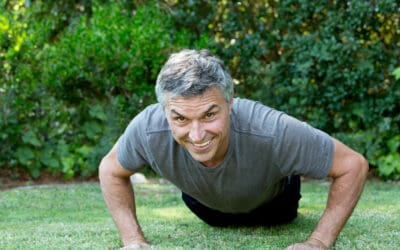DataBiologics recently released its 2021 Outcomes Report: “An Overview of Regenerative Treatments for Orthopedic Conditions.” If you’re not familiar with the organization, DataBiologics helps physicians collect and analyze patient data to measure the efficacy of orthobiologic procedures. We love the idea of gathering data to measure and improve how we treat patients, so we participate in the program regularly.
An orthobiologic treatment, or as we call it, “Interventional Orthopedic and Orthobiologic Medicine,” is an innovative treatment option that uses a patient’s own healthy tissue cells as a source for medical treatments and therapies to other parts of the body. Primarily, these treatments are used for patients seeking relief from common orthopedic conditions, such as osteoarthritis in knees and other joints.
DataBiologics collects patient data to:
- evaluate outcomes of specific procedures,
- look at trends over time, and
- track patient performance on a larger scale.
In the 2021 Report, data was voluntarily collected from 3,275 patients. The most commonly treated body parts were knees and shoulders, and the most common procedures used were PRP (64%) and Adipose (17%).
The results weren’t too surprising from where we sit!
Platelet Rich Plasma (PRP) Used Most
Platelet Rich Plasma (PRP) was found to be the most common regenerative procedure by far. Its use has greatly risen over the past ten years, with widely supported safety and effectiveness. According to the Report, approximately 86,000 U.S. athletes are treated each year with PRP.
PRP is an advanced biocellular therapy using healing elements from a patient’s own blood that regulates inflammation, stimulates repair, and promotes remodeling of damaged tissues. The Outcomes Data showed that 73% of patients experienced meaningful reduction in pain within twelve months of receiving PRP treatment. Specifically, the strongest evidence shows PRP effectiveness for the treatment of tennis elbow (lateral epicondylitis) and knee osteoarthritis, with jumper’s knee (patellar tendinopathy) and plantar fasciosis next, followed by rotator cuff tendinopathy, osteoarthritis of the hip, and high ankle sprains.
Adipose Tissue Therapy Also Scores High
Adipose Tissue Therapy was the second most common regenerative procedure used. The procedure uses adipose (or fat) tissue to provide cushion and support for the injured area. Overall, adipose treatments are used for patients with more severe conditions, as adipose tissue provides a strong source of naturally occurring regenerative cells. While clinical trials are more limited than PRP, recent studies demonstrate vast potential to reduce pain and inflammation.
The Outcomes Data revealed that 70% of patients experienced meaningful reduction in pain within twelve months following treatment. Specifically, the strongest evidence supported knee osteoarthritis, followed by rotator cuff and labral tears and osteoarthritis of the hip.
Knees Most Commonly Treated
Knee pain is the most commonly treated orthopedic condition. The Report demonstrated that positive outcomes could be obtained for the treatment of knee conditions (including knee osteoarthritis) from both PRP and adipose tissue-based treatments. Which treatment will provide better results is largely dependent on the unique characteristics of a patient’s condition, and ultimately up to the physician involved.
Shoulders Respond Well to Adipose Treatments
Shoulder pain is another common orthopedic condition. The report found that long-term outcomes using adipose tissue-based treatments exceeded those treatments using PRP. However, the report noted that the limited sample size rendered it difficult for detailed observations.
Through the DataBiologics Report, physicians gain insights into the efficacy of these treatments. The Report, based directly on data from patients who have experienced these treatments, clearly shows that they are not only safe, but also effective at reducing a patient’s pain and inflammation. The data collected assists physicians in making more informed treatment decisions, ultimately leading to better patient care – something of the utmost importance to all of us.
At Northwest Regen, we are among the leading experts in PRP and Adipose therapies in the Portland community. Our goal is always to achieve the highest quality treatment, with the least amount of discomfort, and the best possible outcome.
Having the ability to effectively perform natural, non-surgical treatments, such as PRP and ADB, is a significant part of our tailored approach. Contact us to learn more.

Dr. Ryan Wood is a licensed Naturopathic and Chiropractic physician focusing on interventional orthopedic and orthobiologic medicine and injection therapies as well as general musculoskeletal and non-surgical orthopedic medicine.
With almost two decades of orthopedic practice across multiple disciplines, he has the necessary experience to ensure proper diagnoses and management of complex cases.


